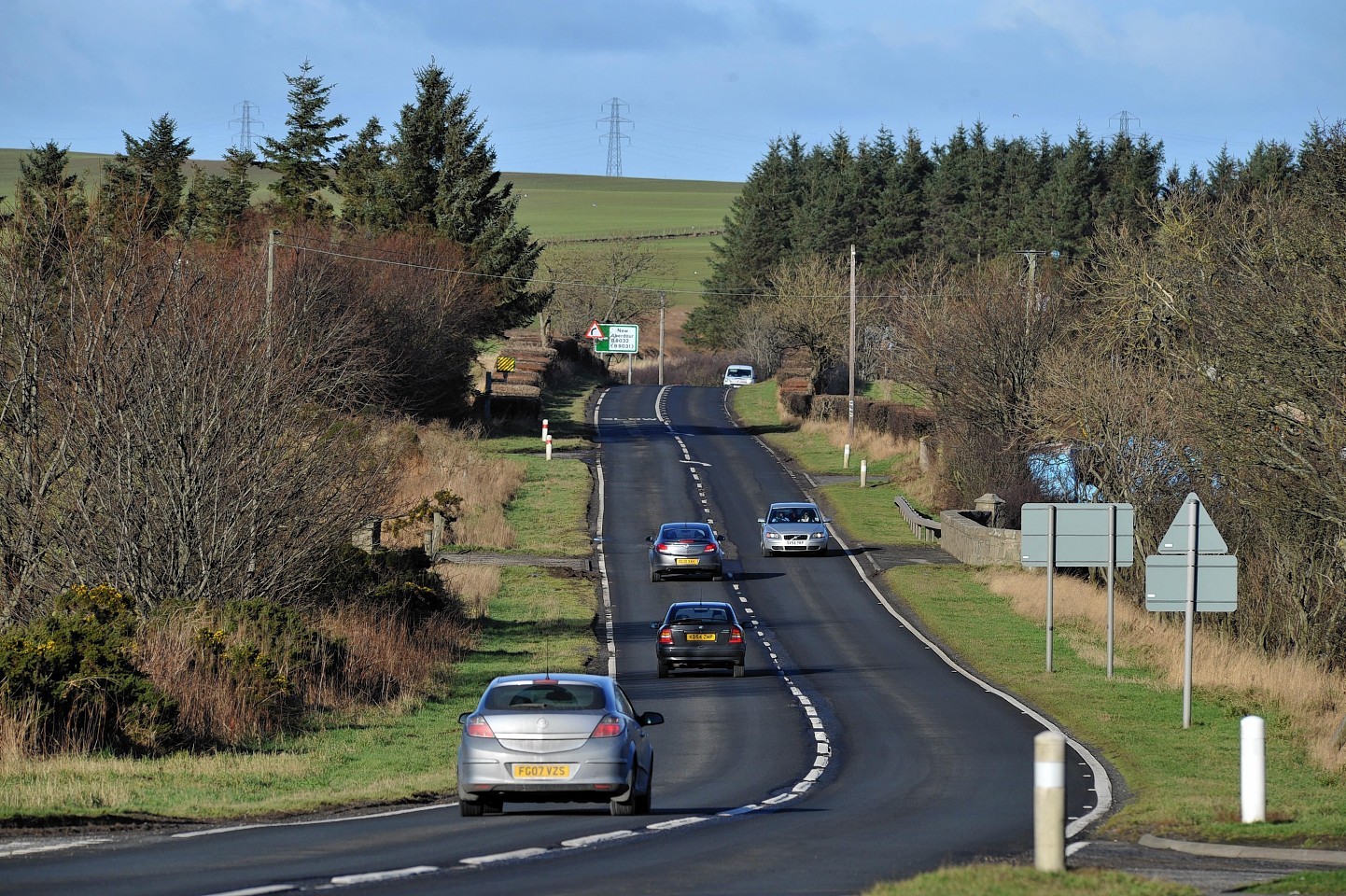Shock new figures have revealed that people in Banff and Buchan are twice as likely to be killed or seriously injured in road accidents as the average UK driver.
The area tops a grim league table of statistics compiled by a parliamentary group.
The neighbouring Westminster constituencies of West Aberdeenshire and Kincardine, and Gordon were in second and third places respectively.
Safety campaigners have described the figures as disappointing – but not surprising.
The full report was released by the Parliamentary Advisory Council for Transport Safety (PACTS) in conjunction with insurance firm Direct Line.
It shows that road users are most likely to be killed or seriously injured driving in rural conditions such as those found in Aberdeenshire.
Residents in Banff and Buchan face a 111% higher chance than the national rate of death or serious injury on the roads.
The figures, collected in 2013, show that three of every four fatalities or life-changing injuries as a result of collisions were suffered in cars.
North-east drivers are much more likely to be killed or injured on Fridays and Saturdays, and are most at risk between 3pm-6pm.
However, taking into account minor injuries, there are fewer casualties on average in Aberdeenshire than the national rate, underlining the fact that although bumps are less frequent, the consequences of a collision in a rural area are often far more severe.
David Davies, executive director of PACTS, said: “Road collisions remain a major cause of death and serious injury in Britain.
“Traffic danger has a significant negative influence on society, it discourages people from walking or cycling, restricts the freedom of children and means vulnerable road users feel intimidated.
“Despite great improvements in emergency services and trauma care, thousands of victims of road collisions are left with life-changing injuries while the families of casualties also find their lives changed forever.”
His comments were echoed by Fraserburgh and District safety group chairman Councillor Brian Topping.
He said: “This is very sad to hear but it’s not surprising. In the area that we’re in a lot of young people are having a lot of accidents.
“There are a lot of young people with high-powered cars and on rural roads that leads to speeding. People go too fast, but also often too fast for the conditions.
“People are sadly and tragically being killed and seriously injured on our roads. causing heartache to family and friends. We’ve got to keep pushing the safety message.”
Councillor Topping also sits on the government’s Scottish Accident Prevention and Safety Awareness Committee and encouraged young people to apply to the local safety group for grants to sit the advanced driving training Pass Plus.
Deanna Wharton runs a kennels and cattery near an accident blackspot on the A952 Mintlaw-Fraserburgh road near Cortes.
Earlier this year a young driver overturned his car and ploughed through Ms Wharton’s garden. He was lucky, and escaped without serious injury.
Last night Ms Wharton said: “About 20 years ago a lady used to walk along this road with her alsatian puppy every day.
“Now you wouldn’t dare – no one would dare walk along the road because it’s lethal.
“Do I feel safe? Not particularly. We came from London where the driving is very different. We’re used to lots of traffic, but not going at this speed.
“The road here gets treated as a racetrack. There are a lot of places on the rural roads where you can’t walk along or cross because cars don’t make provision for you.”
PACTS is an all-party parliamentary group and a registered charity bringing together safety professionals and legislators to identify research-based solutions to transport safety problems.
